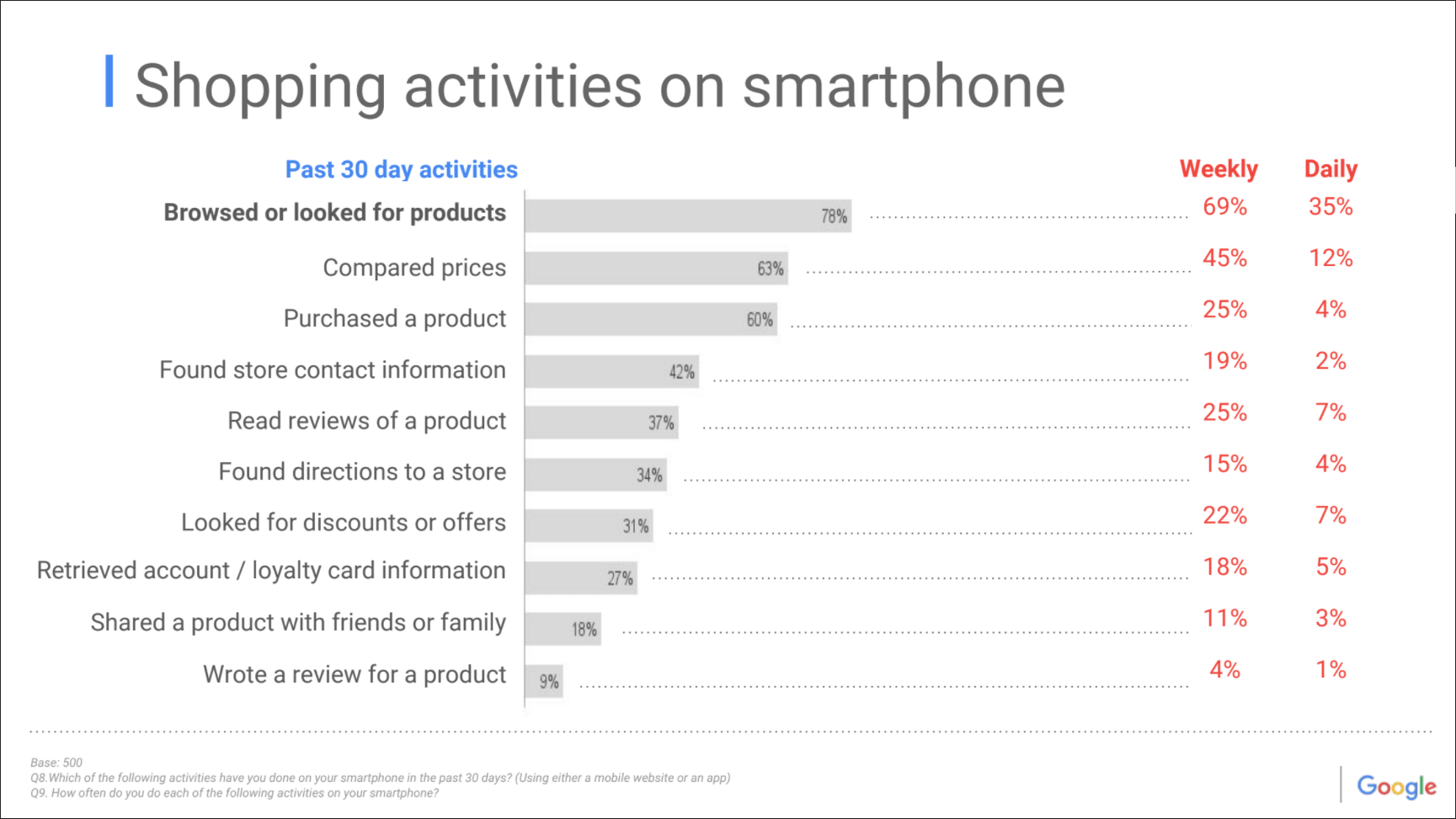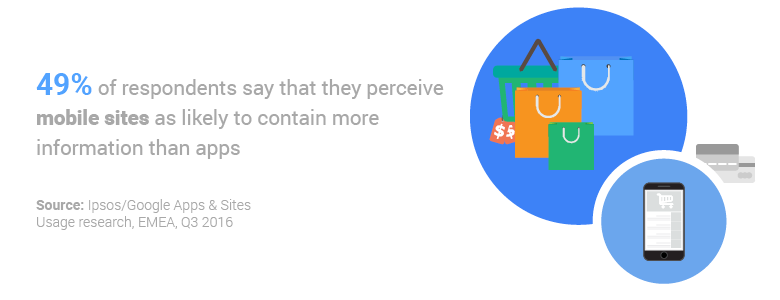Mobile technology has changed the social world. Not only has it altered the way we communicate and interact with each other, it has also greatly affected consumer behavior. In order to capture sales, retailers have created a dual path on mobile devices via sites and apps; thus, no matter how consumers prefer to purchase, they have an easy solution. Understanding consumer behavior and how shoppers use their mobile devices is now critical in conquering the path to purchase.
According to a study by Google Marketing Insights, nearly half of U.S. consumers with mobile phones use their devices weekly to shop. One in ten people states that they shop via mobile daily. These are huge numbers, especially when coupled with the fact that 60% of consumers use a mobile website to shop. Despite the proliferation of apps, it seems that a user-friendly mobile website is preferred by shoppers.

In general, mobile shoppers find that mobile websites offer more information. While 64 percent agree that shopping apps load quicker and 60 percent say they are easier to navigate, the path to purchase seems to flow more easily through a mobile website. This makes a strong case for all retailers having device agnostic or responsive websites. Having a website that scales based on device is key to capturing a majority of shoppers.

If a retailer is interested in making sure their app is part of the path to purchase, including special discounts or exclusive deals via the app seems to be the way to go. Thirty-five percent of mobile shoppers state they download apps specifically for discounts. Additionally, making sure the app is secure will also ensure more consumers use it; more than 70 percent of smartphone owners who download apps cite security as a deciding factor.
If you're looking for ways to streamline your path to purchase or simply want to learn more about mobile- and app-based shopping trends, please contact Energyhill today. Our team of expert marketers is ready to help you capture and cash in on this mobile revenue stream.
Increasing online sales year after year has resulted in a steady decline of brick and mortar locations for many retailers. While this year's Cyber Monday sales hit record highs, according to the Washington Post, in-store visits declined by 1.6 percent over last year. As a result, below are 20 of the biggest retailers who will be closing locations before the end of 2017:
There are advantages and disadvantages to shopping purely online. The convenience factor is certainly an advantage; while the inability to touch and feel the product prior to purchase is a challenge. Perhaps the biggest challenge, however, is the loss of local jobs associated with closing retail stores. Whether you're part of a brick-and-mortar location or own an online retail store, you'll need robust digital marketing efforts to keep the business healthy. Energyhill is committed to working with clients in all aspects of advertising, design, and video promotion. For more information about our work and how we can help your business, please contact us today.